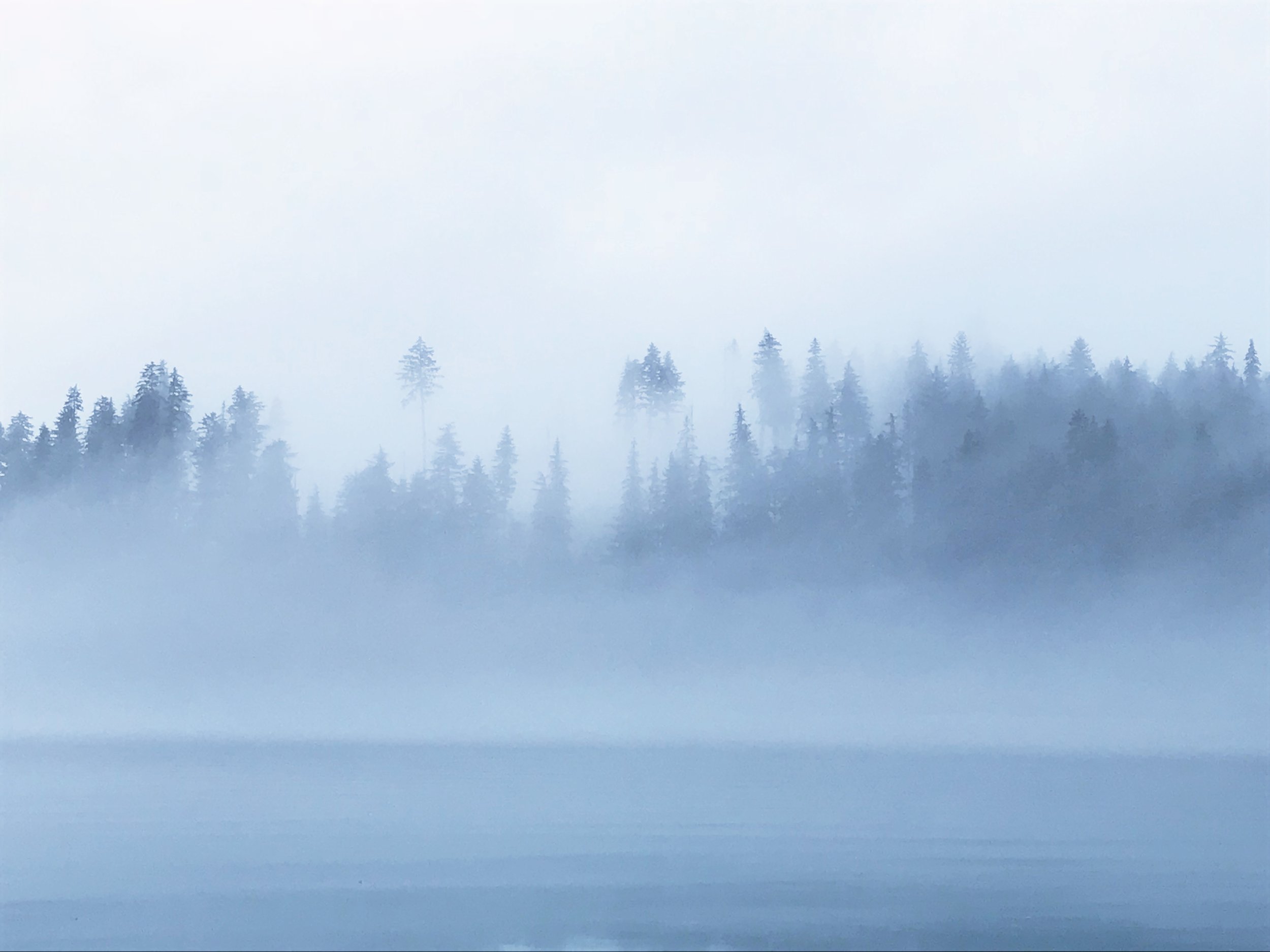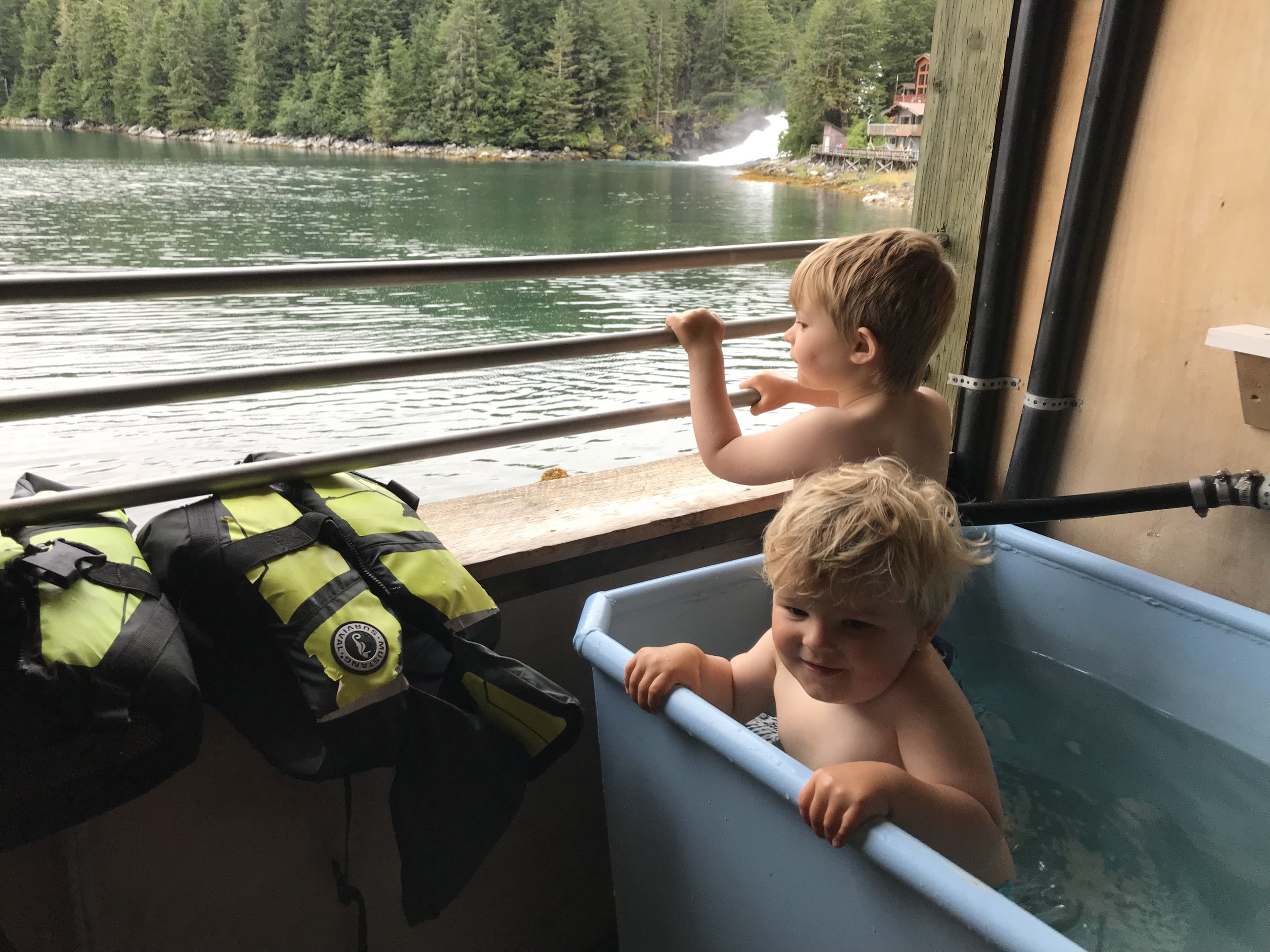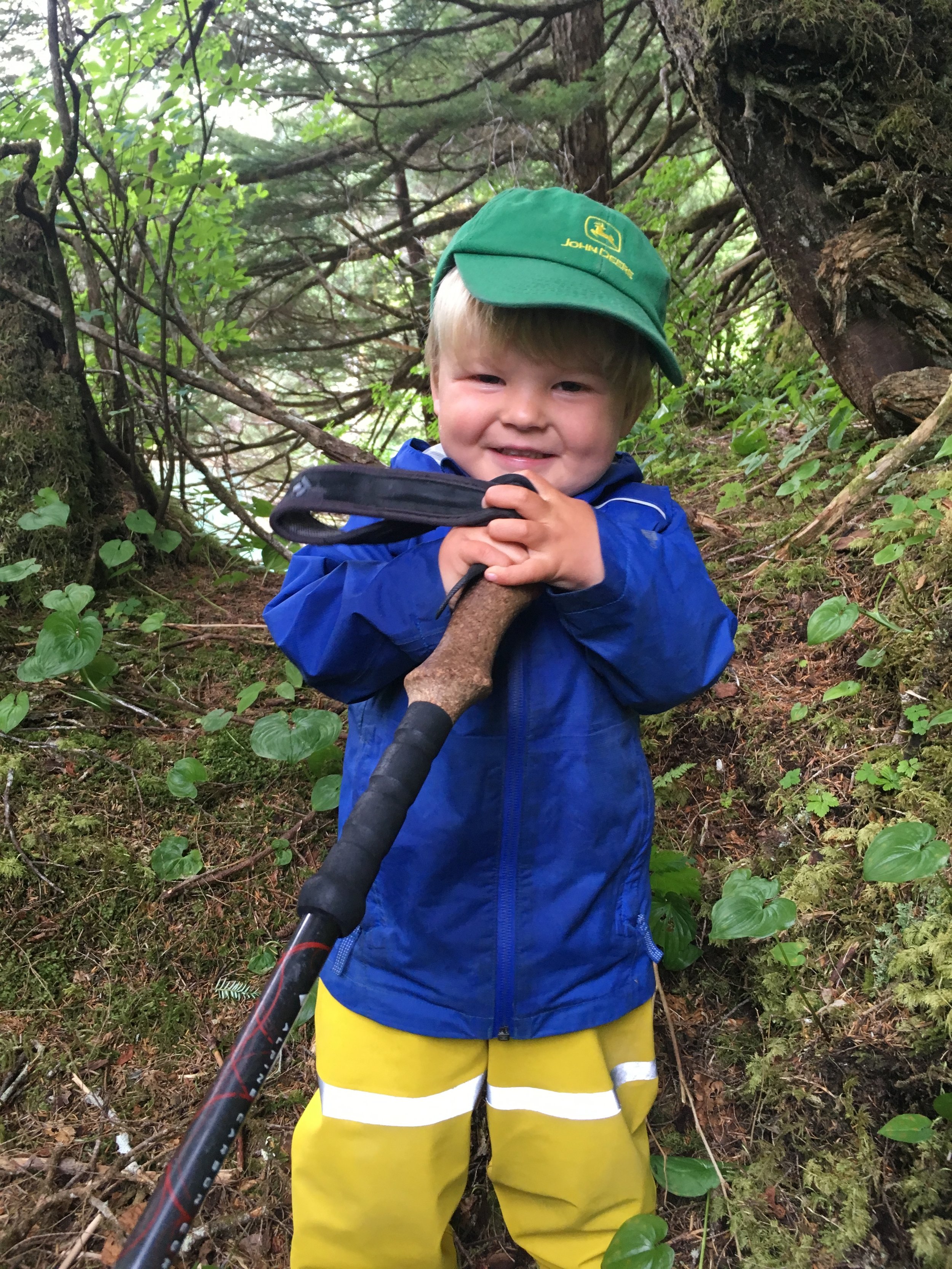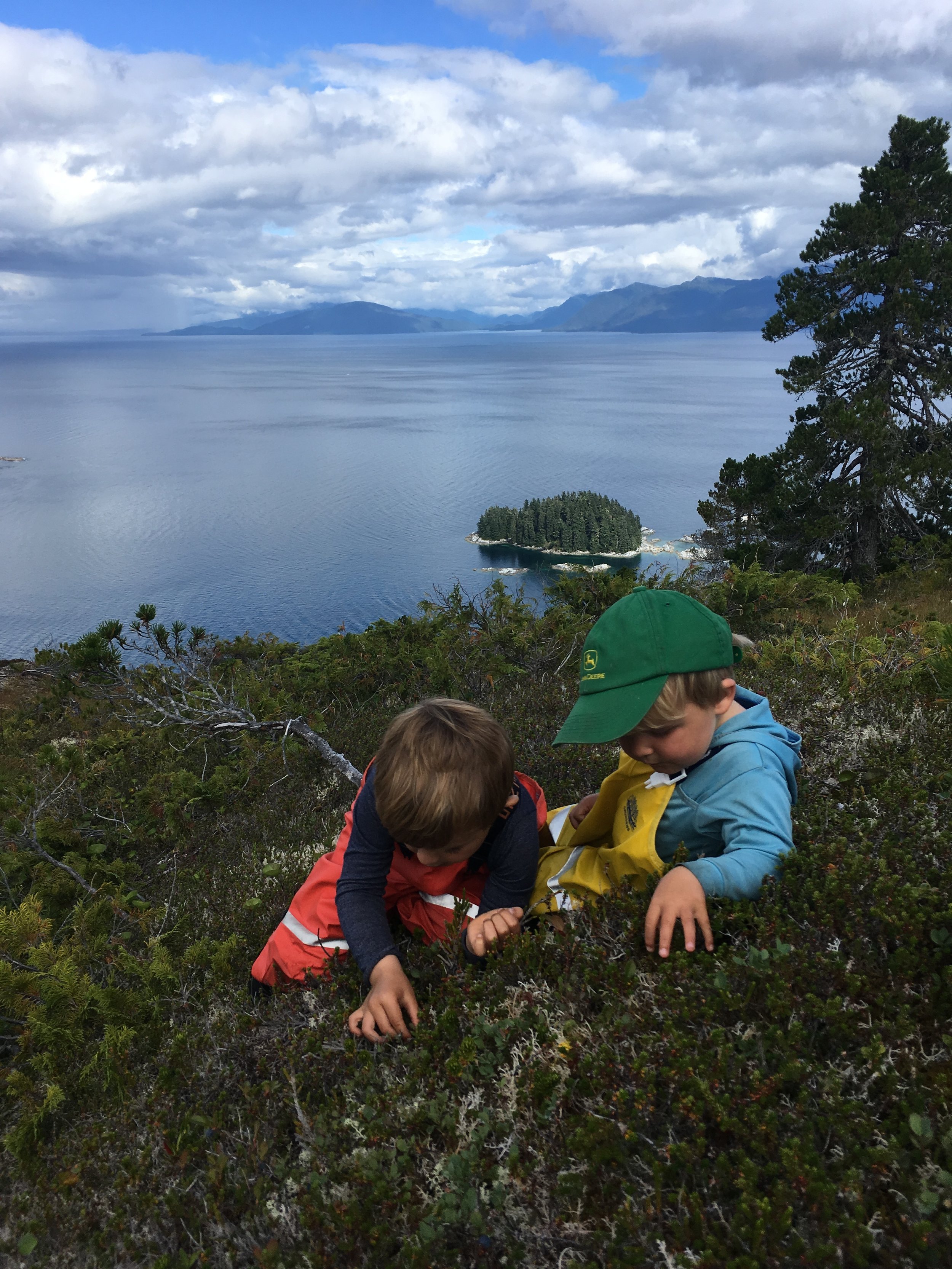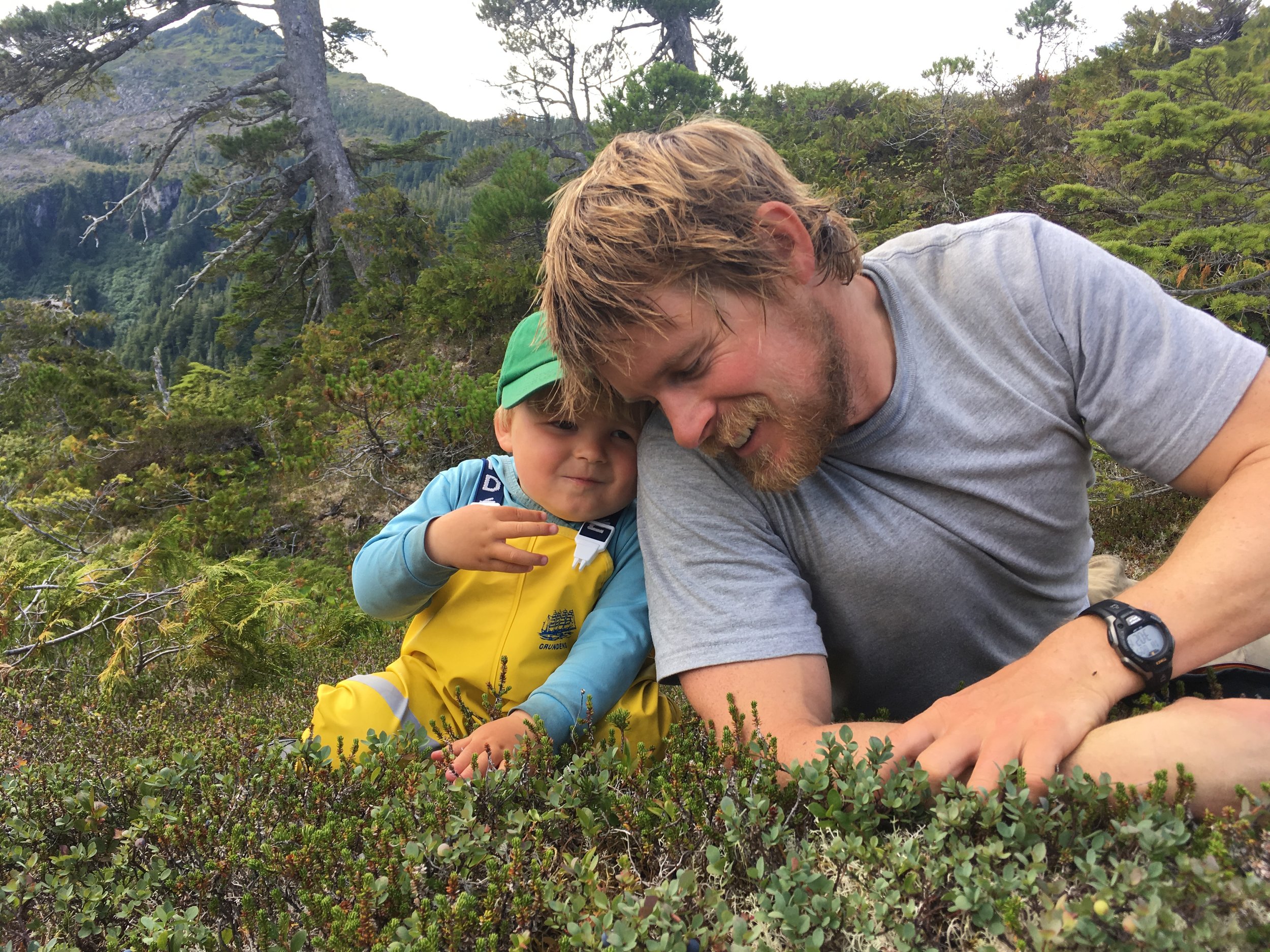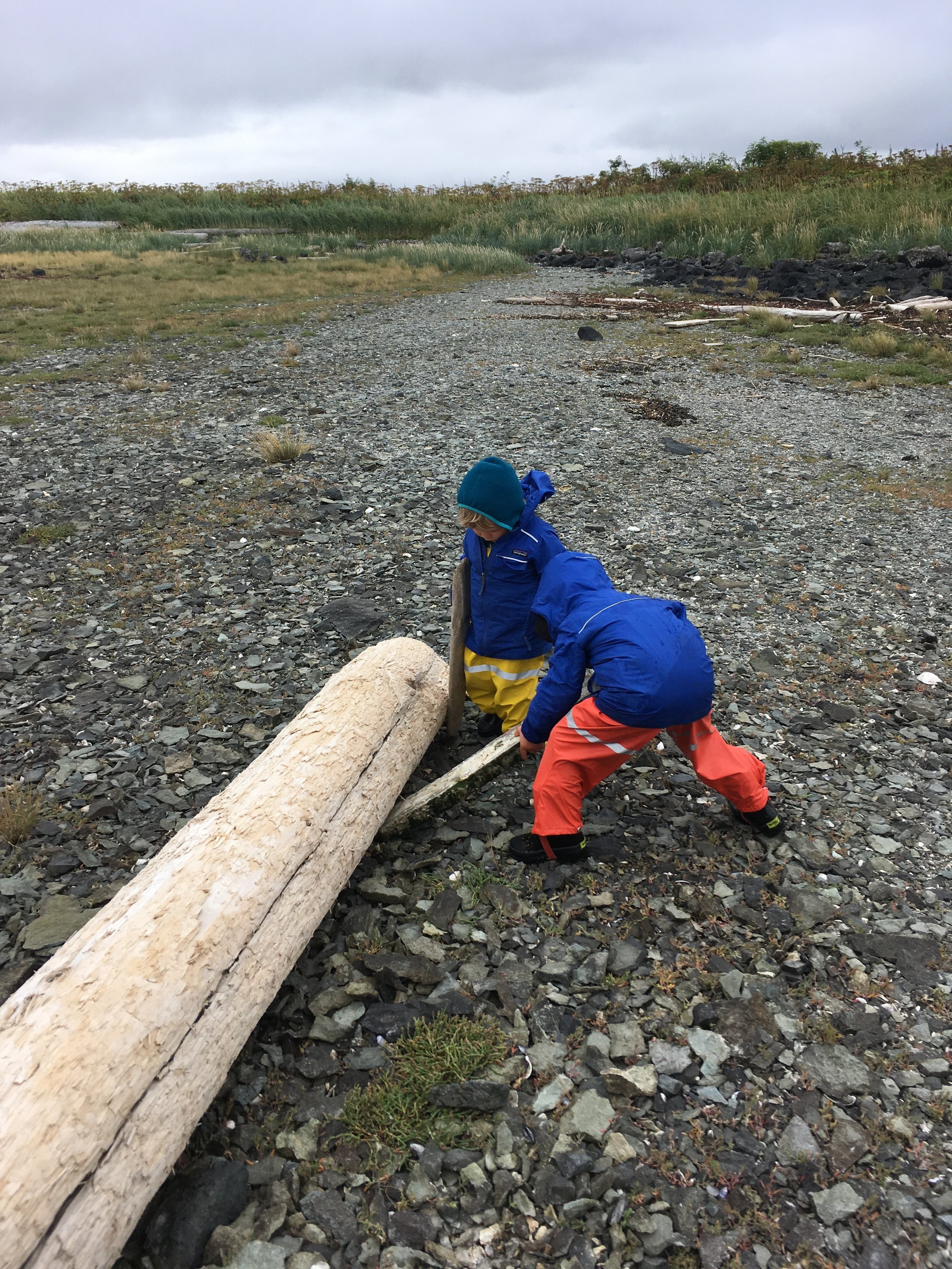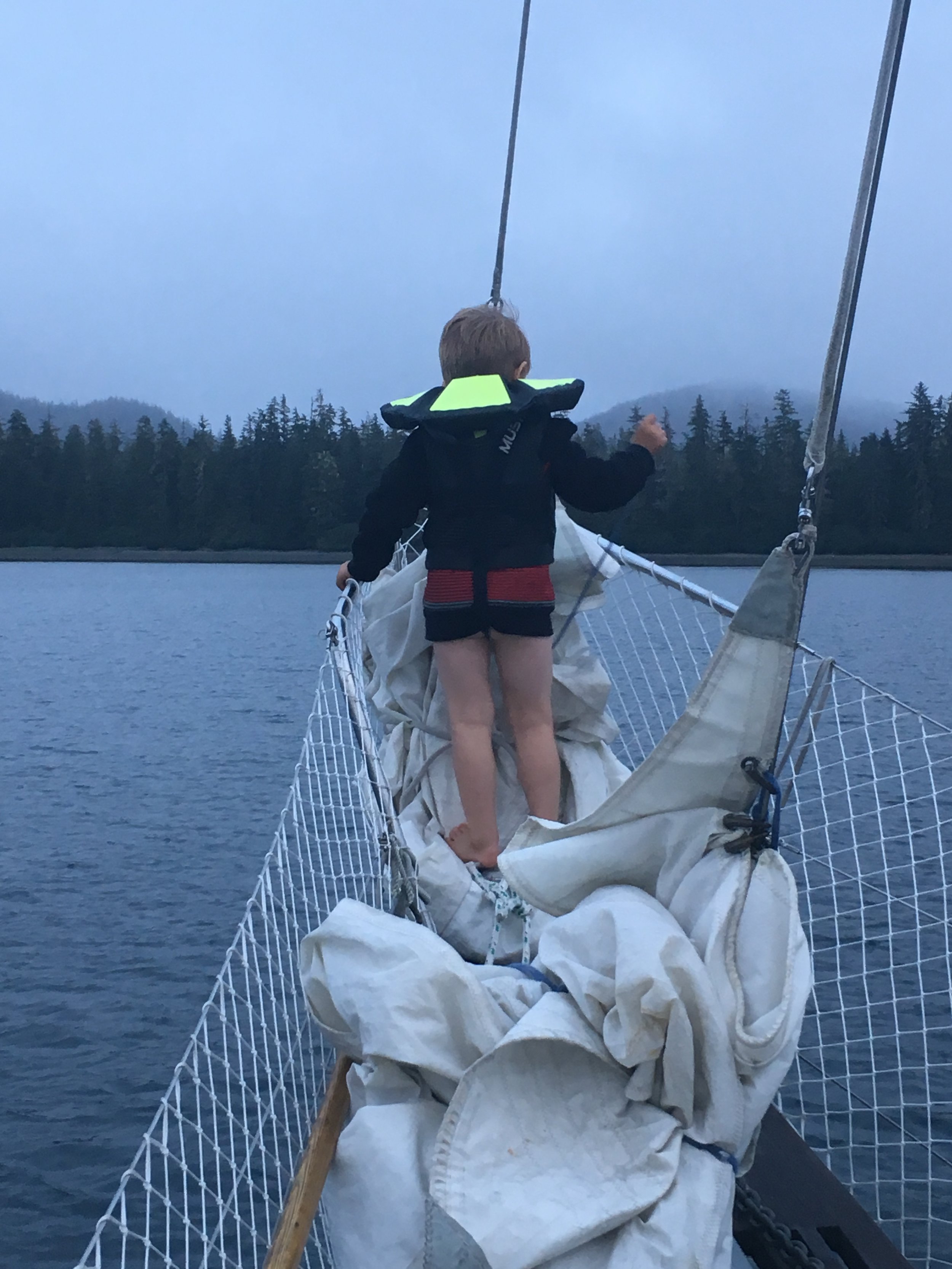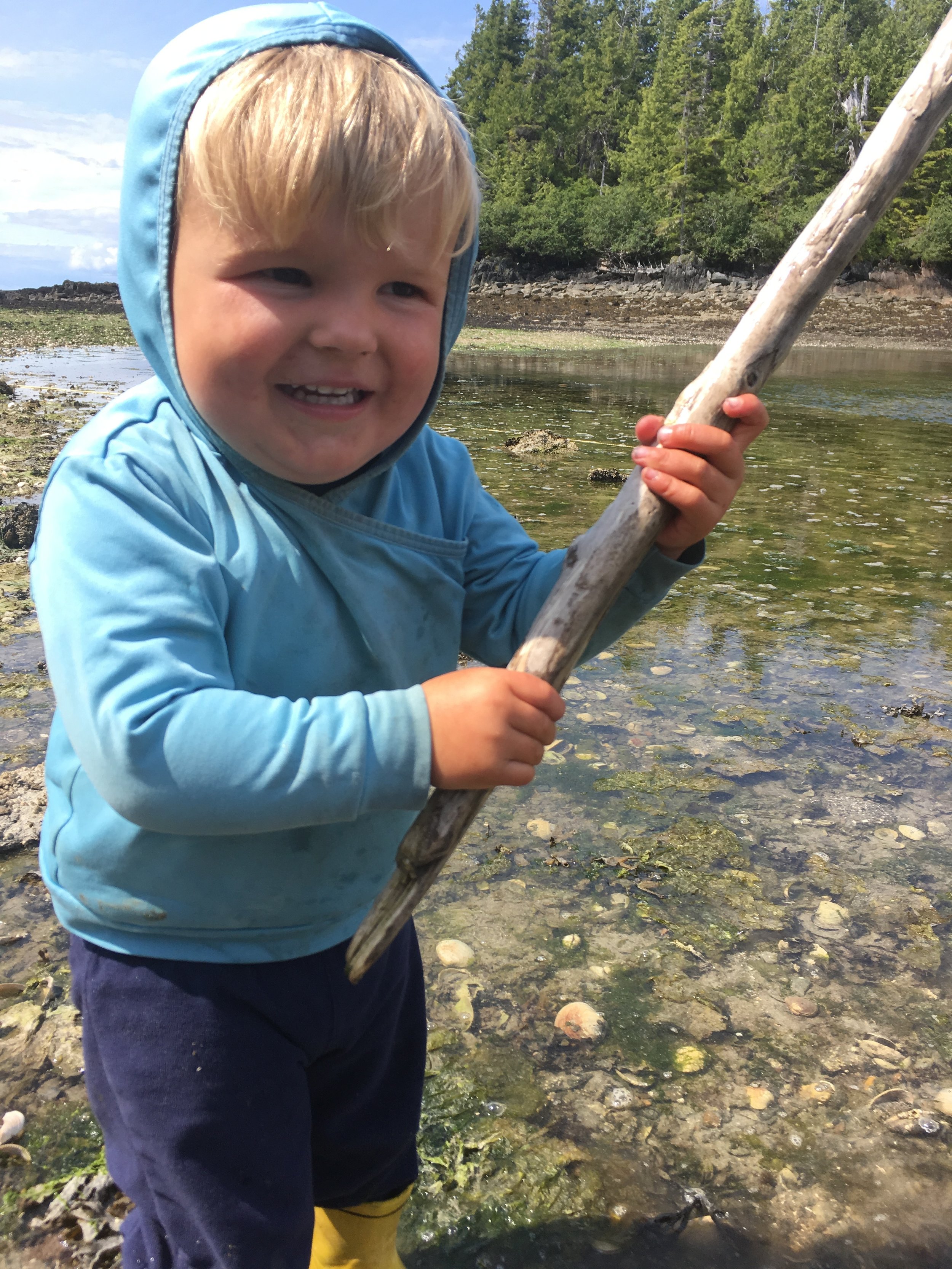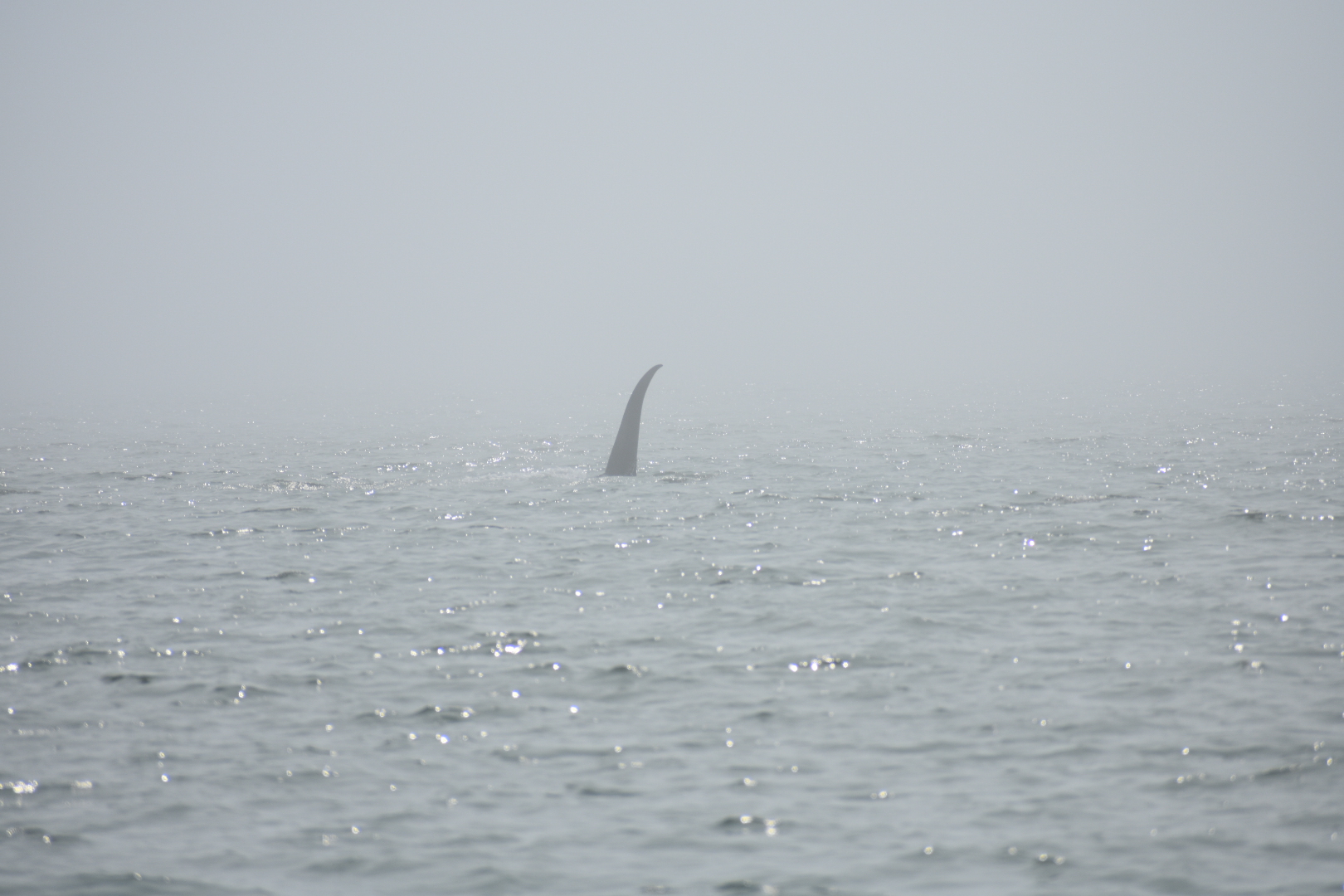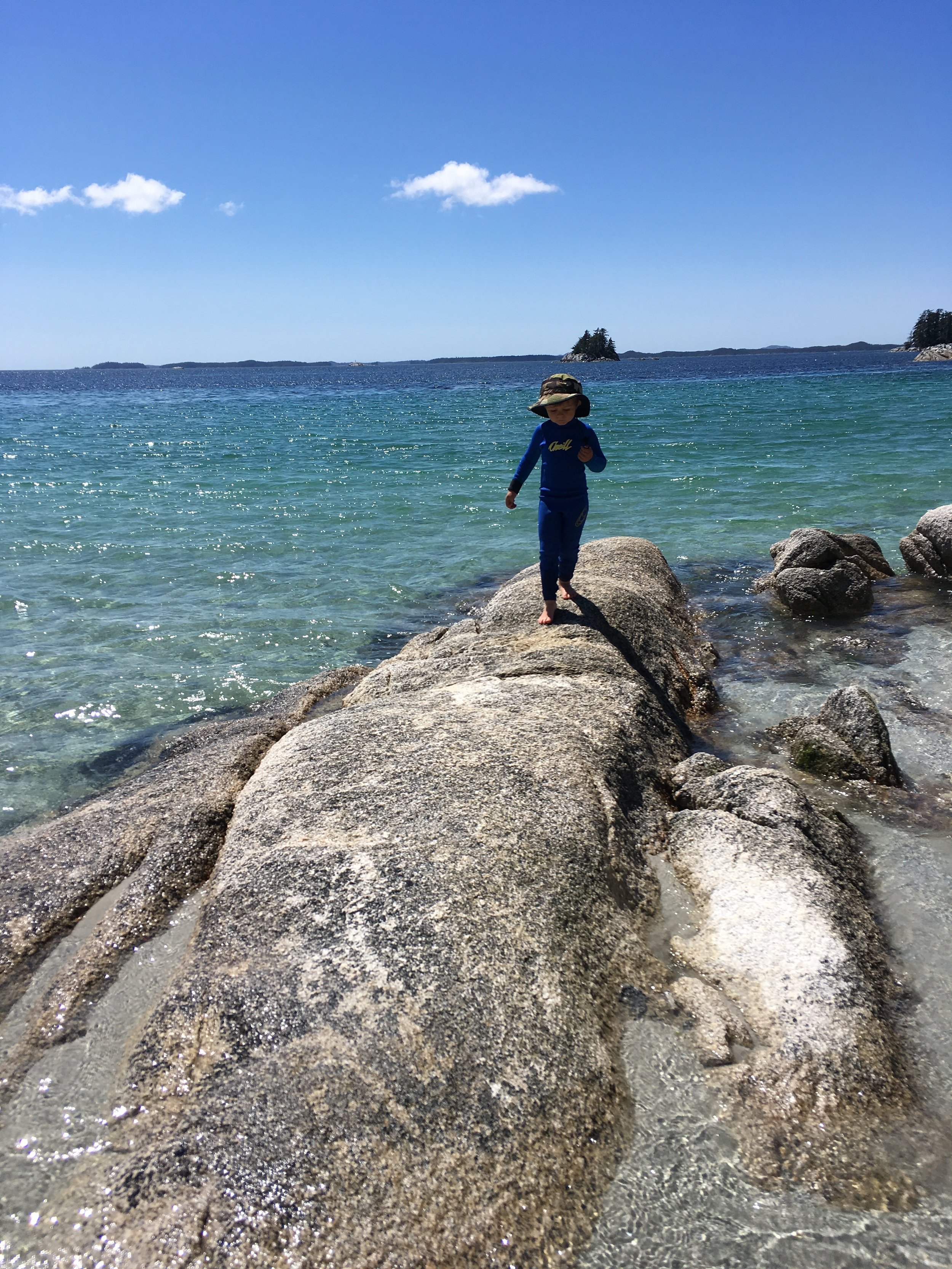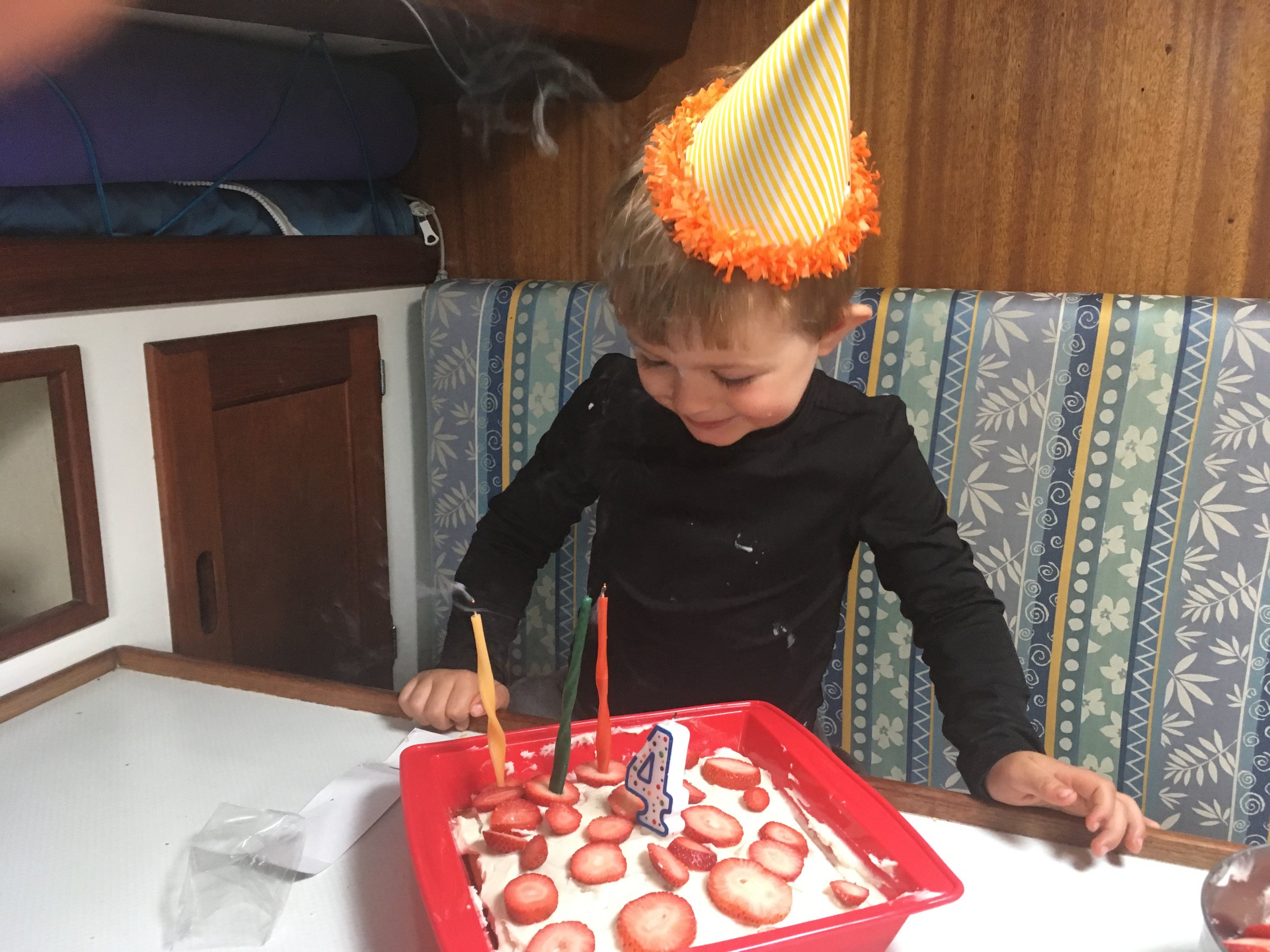Lynn Canal never fails to welcome us home with its own version of tough love. Eldred Rock, a lighthouse just a few miles from our cabin, typically reports stronger winds than almost anywhere else in southeast Alaska. Yesterday was no exception. We zoomed north for 35 miles, often hitting a speed of 8 kts/hr (usually, we’re happy to make 4-5 under sail). The sun broke through the rain clouds and lit up the steep peaks and hanging glaciers that line the canal. As we passed familiar terrain, I felt the first real nostalgia about reaching our destination. But there wasn’t much time to contemplate the views—between managing kids and managing sails, our hands were full and we had to savor our homecoming in brief bursts. Arriving to the Haines harbor was equally hectic. The wind howled from behind and Pat had the engine running in reverse to slow us down. Shortly after blowing in, someone clocked a gust of 40 knots. Of course the boys wanted to see our final arrival, which always adds to the chaos. As Pat put it, having the boys (especially Dawson) up on deck when we’re trying to take down sails or wiggle our full-keel, 20,000-pound boat into a narrow slip in the wind feels a bit like someone has released a raccoon in the cockpit. Manage the crisis before you, and keep the raccoon from causing damage. But now we are here, all intact, despite Dawson’s final hurrah of taking a full somersault dive down the companionway steps shortly after we arrived (apparently he was saving his best performance for last).
Just in case we had started to feel overly confident after getting a few miles behind us, two recent August storms pointed out the fact that we are a small boat in a big sea, and still learning our way around the many nuances of sailing. A wave into the cockpit, a crashing drawer full of silverware, and a hasty second anchorage were all reminders that we should not be complacent when it comes to the whims of the North Pacific. After the worst of the first storm passed, we poked our bow out for a short run to another bay a few miles away. We raised the jib, caught the stiff breeze, and all seemed fine until we turned the corner into a confused, choppy soup. Waves ran broadside to the wind and, suddenly, just one headsail seemed like too much. A big set brought a wave that drenched Pat in the cockpit, sent a drawerful of silverware, knives, and tools flying to the floor, and left the boys hooting with excitement. They seem to find these moments of stress quite entertaining. Fortunately, everyone fared fine, the drawer went back together, and we were able to find protection soon after, but it left Pat and I a bit humbled. Chaika undoubtedly can take much more than what the recent gales delivered, but that doesn’t necessarily mean we can. So, when the next gale was forecast, we found an anchorage that seemed decent, if a bit open to the east. We took a short trip to the beach to explore, stared out at all the water before us, and decided we’d better make a push to somewhere more secure before dark. We were happy we did so when the wind started to howl later that night, and realized we would have been hit squarely with 30-40 knot gusts at our first site. Instead, we swung around in a tight bay surrounded by forested slopes.
The last week of our trip brought rain, wind, whales, long sailing days, and a growing desire to stretch our legs in a slightly larger space. Seeing whales surface nearby and watching a bear at close range from the safety of the dinghy were among our farewell gifts. We also managed to catch the annual community party in Tenakee Springs, and were invited for hot dogs and music as we walked by. It’s amazing how easily our minds adjust to expectations. Had we planned to continue sailing for another two months, or six, I’m sure we would happily do so. But once we got a whiff of home, our bow pointed due north and we all longed for the wood stove, our familiar beach, and a little quiet morning time, alone (at least for me!). There are quite a few chores to finish before we can truly settle in—one of the first among them is putting up the bear fence—but we’re close to being home. We’re also grateful that we made the trip without any major mishaps, and only an alternator replacement for mechanical repairs
We had considered a quick stop at our cabin before docking in Haines, but with our exposed coastline and the stiff south breeze, there was no chance of anchoring here, even temporarily. We will wait to say hello until we come out by skiff, sometime in the next few days. Losing Chaika at our final stop would be a bummer of a way to end the trip. So we’ll take care of our town errands—wash several loads of laundry, pick up mail, haul a trailer-full of food and supplies to the dock (and then to Glacier Point)—and get ready for our next phase of the adventure.
We haven’t decided where we’ll take Chaika next, but Haines will be her home port through the winter. It will also be our floating base for when we come to town to resupply and get stuck by weather (as we often do). This will be our first fall at our cabin, and we’re excited to see the seasons change, although hopefully we can hang on to the tail of summer for a little bit longer. In the company of bears, wolves, otters, and other creatures, and minus the usual amenities of dishwashers, electric heat, flush toilets, and refrigerators, this version of home will be an adventure in itself, especially with our boys. Huxley has been waiting all summer to get to the cabin so he can build a treehouse and work on various projects. Dawson thinks that anything Huxley does is cool, made even better by pulling his hair, poking him, or doing whatever little brothers do to annoy their siblings. Dawson turns two in a few days, and is still wondering who is coming to his birthday party. I haven’t yet broken it to him that it will just be us (meaning mom, dad, and brother). We’re short on neighbors of the human variety at Glacier Point. But he can still count on a cake and presents, and I’ve promised a trip to see cousins and friends soon. Anyone up for a visit?
Thanks for sharing our sailing adventure with us, and please stay tuned for updates about life at Glacier Point.
Humpback feeding in Icy Strait.
There it is!
Digging for roots.
Oh, those bugs!
The boys’ favorite part. “The bear pooped!”
OK, the show’s over, folks.
Party at Tenakee Springs.
View from shore.
Improvised teeter-totter.
Hike on the beach.
Waiting out a storm.
Rainy day hike.
Hooked a big one...and then it got away!
Fun in the V-berth.
Last night at anchor.
Misty morning.
Eldred rock lighthouse.
Exciting day in Lynn Canal.
Sailing into Haines harbor.















